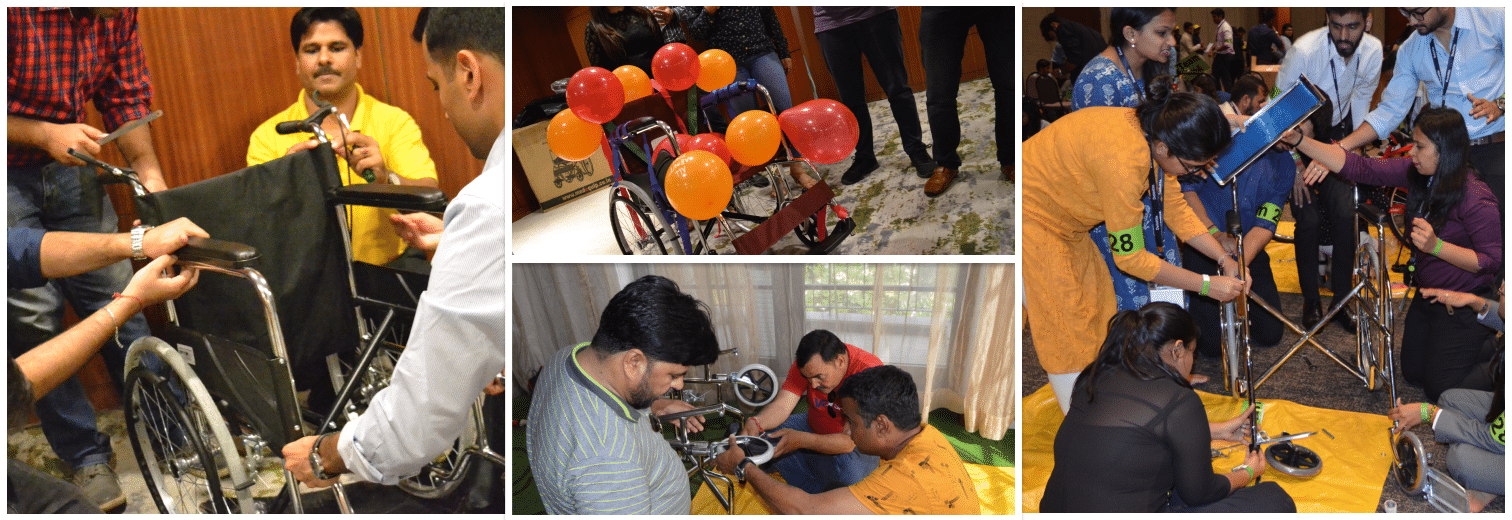Having stars in a team is one thing and having a star team is another. This statement, to me, underlines the essence of a team. A team begins when the individuality of its members start to blur in a way that a new cohesive entity emerges which is more potent and singularly aligned than the summation of each individual members. It is easier said than done. There are many roadblocks in achieving this potent alignment.
 By my experience in the corporate world, here are FIVE mantras critical for having effective teams:
By my experience in the corporate world, here are FIVE mantras critical for having effective teams:
1. Effective Leadership:
A team clearly has to have one clear stated leader. This is key for alignment. He is the magnet that would align all arrows in one direction. As often happens with a group of talented individuals, strong diverse opinions are a given. Chances of emergence of multiple power centres is strong. An effective leader should be able to channelize these energies and derive the force needed for making the Team effective.
2. Diversity of team members:
If one has an option to choose a Team, he should consider choosing individuals who are different rather than similar. This difference should be:
a) In terms of Personalities:
There are various ways and tools by which to classify personalities. One such is to look at people as:
- The Drivers (The Reds)
- The Analytical types (Blues)
- The Supportives (Greens)
- The Flamboyants (Yellows)
Different popular psychometric tools like MBTI, DISC and Hogan can be used to achieve the same end.
b) In terms of Skill set:
The various tasks a team encounters, often require a complex combination of various skills within the team. A team that is constituted by individuals who are adept in varied skills, always gives itself a significantly higher chance of winning. A good analogy is to imagine a cricket team with bowlers who are all off-spinners versus one that has a mix of fast bowlers, off-spinners & leg-spinners! It would be quite obvious which would be the more effective unit.
3. Team Chemistry & Synergy:
As I have said earlier, for a team to emerge, the individuality needs to blur. This blurring happens when the members start to connect with each other. The connection needs to grow to a high level of “trust” for the team to be effective. This is where I think maximum time needs to be spent while forming a team. Ice-breaking sessions, warm-ups, informal evenings and making them spend time together would go a long way in making this happen. Time and effort that organizations spend on such team building activities hence, are not a luxury – but rather a necessity in stoking this chemistry / synergy within teams.
4. Playing to Strength on Roles and Responsibilities:
“Horses for Courses” – once the team members are selected, and task clarified, the next key element is to assign responsibilities as per the strengths of the team members. This goes back to my second point on “diversity” – this is the reason why diversity was sought in the team selection. Each individual is different – bringing in different opinions, different beliefs, different personality types, different skill sets and different approaches. Each individual in a team brings in some strengths and some sore points. How well the SWOT (Strengths, Weaknesses, Opportunities and Threats) analysis is done before assigning roles often has a big influence on Team effectiveness.
5. Training for Success:
Practice makes a man perfect. This virtue has been highlighted right from Gita (abhyasena tu kaunteya…) and would always remain the most critical element for success. Once a team is formed & roles assigned, the next thing is to take them through the rigor of training. But why is this needed in a team of professionals? Because like in a marriage, where people take time to understand each other and form norms, so too in a team – training sessions, often help teams simulate real life situations & agree upon norms for team working.
Finally I would say that what is true for an individual is true for a team – the one who often succeeds is the one who has a burning desire.
Ask yourself – does your group have a burning desire to succeed as a team?




